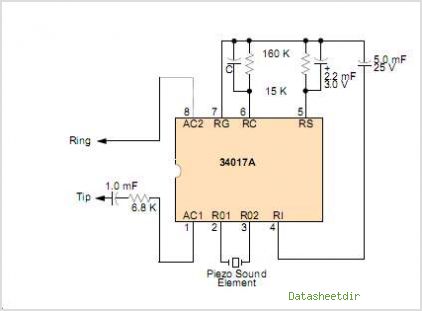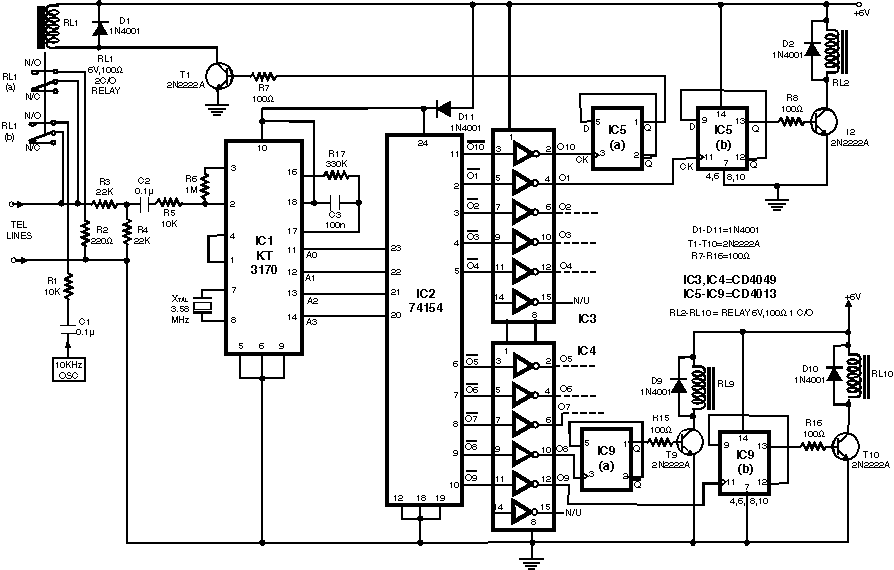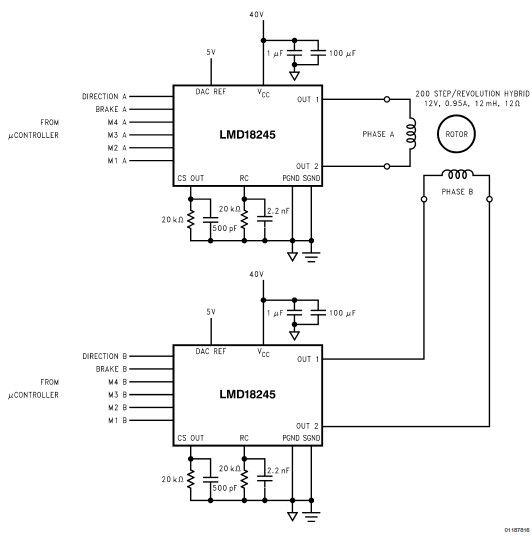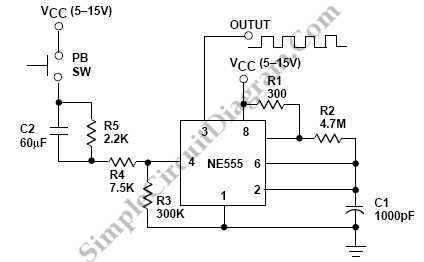
MC34017A Telephone Tone Ringer Bipolar Linear/I2L

It is widely recognized that power-saving regulations necessitate very low power consumption during standby conditions for all equipment continuously connected to mains power. In the standard version of the power supply, standby power consumption is approximately 9.0 W for a 100 W power output. However, when utilizing the MC44608 GreenLine Power Supply controller, standby power consumption drops to 1.3 W. While this reduction is impressive, certain specialized applications may require even lower power consumption. In such instances, the optimal solution is to implement a separate low-output power supply (less than 1.0 W) dedicated solely to powering the microprocessor while turning off the remaining components of the application. Although the MC44608 is not specifically designed for this purpose, it is possible to achieve this by incorporating a few additional components into the typical application schematic. This approach can result in standby power consumption as low as 200 mW.
The MC44608 GreenLine Power Supply controller is a versatile component that can be adapted for low-power applications with careful design considerations. In the typical configuration, the controller effectively manages power output while minimizing energy waste during standby mode. To achieve further reductions in power consumption, the circuit can be modified to include a separate low-output power supply. This additional power supply should be designed to deliver less than 1.0 W, specifically tailored to meet the needs of the microprocessor.
Key components to consider for this modification include a low-dropout regulator (LDO) or a buck converter that can efficiently step down the voltage to the required levels for the microprocessor. The selection of these components is critical in maintaining efficiency and ensuring that the overall power consumption remains within the desired limits.
In addition, it is essential to include control circuitry that can effectively manage the power states of the microprocessor and the other components of the application. This may involve using a microcontroller or a dedicated power management IC that can switch off non-essential parts of the circuit during standby, thereby conserving energy.
The schematic should incorporate feedback mechanisms to monitor power levels and ensure that the microprocessor receives stable power without fluctuations that could affect performance. Proper decoupling capacitors should also be placed near the power supply pins of the microprocessor to filter out noise and maintain stable operation.
By implementing these strategies and utilizing the MC44608 in conjunction with a dedicated low-output power supply, it is feasible to achieve standby power consumption as low as 200 mW, aligning with stringent power-saving regulations while maintaining the functionality of essential components.As it is well known, according to power saving regulations, we need to obtain a very low power consumption during standby condition for all equipment continuously powered on the mains. For not saving version of power supply, the standby power consumption is around 9. 0 W (for 100 W power output). When using the MC44608 GreenLine ›› Power supply controller, we obtain 1. 3 W in standby mode. The result is absolutely phenomenal, but still, for some special applications, the power reduction is not enough. In this case the only possibility to obtain a lower consumption in standby is to use a separate low output power supply (< 1.
0 W) for powering only the Microprocessor and Switch off the rest of the application. The MC44608 is basically not designed for that use. However this is achievable by adding a few more components to the typical application schematic. In this case we CAN reach a standby power consumption as low as 200 mW. 🔗 External reference
The MC44608 GreenLine Power Supply controller is a versatile component that can be adapted for low-power applications with careful design considerations. In the typical configuration, the controller effectively manages power output while minimizing energy waste during standby mode. To achieve further reductions in power consumption, the circuit can be modified to include a separate low-output power supply. This additional power supply should be designed to deliver less than 1.0 W, specifically tailored to meet the needs of the microprocessor.
Key components to consider for this modification include a low-dropout regulator (LDO) or a buck converter that can efficiently step down the voltage to the required levels for the microprocessor. The selection of these components is critical in maintaining efficiency and ensuring that the overall power consumption remains within the desired limits.
In addition, it is essential to include control circuitry that can effectively manage the power states of the microprocessor and the other components of the application. This may involve using a microcontroller or a dedicated power management IC that can switch off non-essential parts of the circuit during standby, thereby conserving energy.
The schematic should incorporate feedback mechanisms to monitor power levels and ensure that the microprocessor receives stable power without fluctuations that could affect performance. Proper decoupling capacitors should also be placed near the power supply pins of the microprocessor to filter out noise and maintain stable operation.
By implementing these strategies and utilizing the MC44608 in conjunction with a dedicated low-output power supply, it is feasible to achieve standby power consumption as low as 200 mW, aligning with stringent power-saving regulations while maintaining the functionality of essential components.As it is well known, according to power saving regulations, we need to obtain a very low power consumption during standby condition for all equipment continuously powered on the mains. For not saving version of power supply, the standby power consumption is around 9. 0 W (for 100 W power output). When using the MC44608 GreenLine ›› Power supply controller, we obtain 1. 3 W in standby mode. The result is absolutely phenomenal, but still, for some special applications, the power reduction is not enough. In this case the only possibility to obtain a lower consumption in standby is to use a separate low output power supply (< 1.
0 W) for powering only the Microprocessor and Switch off the rest of the application. The MC44608 is basically not designed for that use. However this is achievable by adding a few more components to the typical application schematic. In this case we CAN reach a standby power consumption as low as 200 mW. 🔗 External reference





